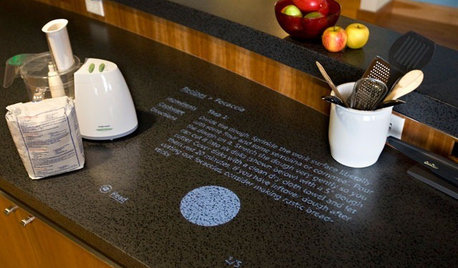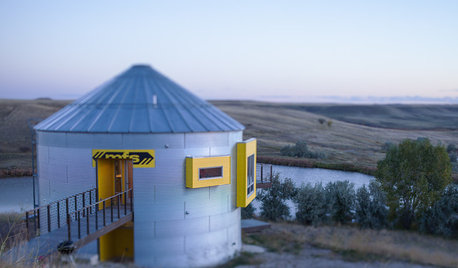Trivial hypothetical - an research on turning lights on and off
albert_135 39.17°N 119.76°W 4695ft.
16 years ago
Related Stories

LIFESlow Living 101: Tips for Turning Off the Chaos
It may feel as though you're too busy to slow down and enjoy life. But even little changes can have a big effect
Full Story
HOME TECHComing Soon: Turn Your Kitchen Counter Into a Touch Screen
Discover how touch projection technology might turn your tables and countertops into iPad-like devices — and sooner than you think
Full Story
TRADITIONAL ARCHITECTUREHow to Research Your Home's History
Learn what your house looked like in a previous life to make updates that fit — or just for fun
Full Story
HOME TECHHouzz Tour: A Gin Distillery Turned Bachelor Pad
A renovation converts a dated North London apartment into a sleek, contemporary home for work, rest and play
Full Story
HOUZZ TOURSMy Houzz: Turning a Netherlands Barn Into a Country Home
Once a place for chilling milk, this Dutch home now lets the owners chill out in easygoing comfort
Full Story
SHOWERSTurn Your Shower Niche Into a Design Star
Clear glass surrounds have raised the design bar for details such as shampoo and soap shelves. Here are 4 standouts
Full Story
COLORFUL HOMESHouzz Tour: Turning Tradition on Its Head in Vermont
Leopard-spotted stairs, Victoriana paired with Lucite and other daring style moves give a home in a shire a completely new twist
Full Story
HOUZZ TOURSHouzz Tour: Prairie Grain Bin Turned Bucolic Retirement Home
An agrarian structure and a big dream combine in this one-of-a-kind home that celebrates 250 acres of Montana grasslands
Full Story
DECORATING GUIDESTurn Your Corks Into Home Décor
Are the wine corks piling up in your house? Learn how to recycle or reuse these versatile, sustainable stoppers
Full Story
GREEN BUILDINGOff the Grid: Ready to Pull the Plug on City Power?
What to consider if you want to stop relying on public utilities — or just have a more energy-efficient home
Full StorySponsored
More Discussions






zink
zink
Related Professionals
Fort Lee Landscape Architects & Landscape Designers · Manchester Landscape Contractors · Edwardsville Landscape Contractors · Fort Mill Landscape Contractors · South Lake Tahoe Landscape Contractors · Uxbridge Landscape Contractors · Bartlesville Fence Contractors · Fair Oaks Fence Contractors · Park Ridge Fence Contractors · Parker Fence Contractors · South Yarmouth Fence Contractors · Westmont Fence Contractors · Atlanta Roofing & Gutters · Franklin Roofing & Gutters · North Hollywood Roofing & Gutterszink
sinfonian
zink